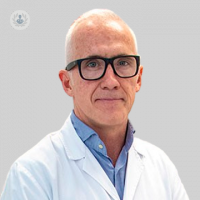Sleep apnea, how do you correct them?
Written by:The frequency of OSA ranges between 2 and 4% of the general population and is more common in men than in women (4% and 2% of men and women over 40 years, respectively). In 80% of cases there is a problem associated with overweight.
 Sleep apnea is a temporary interruption of the respiratory rhythm in most cases is due to obstructive mechanisms in the upper airway in connection with snoring.
Sleep apnea is a temporary interruption of the respiratory rhythm in most cases is due to obstructive mechanisms in the upper airway in connection with snoring.
The appearance of recurrent episodes of apnea in a patient, together with health disorders arising from these apneas, called apnea-hypopnea syndrome (SAHS)
Am I suffer from sleep apnea?
Sleep apnea is defined by the existence of respiratory arrests of more than 10 seconds during which you can see an effort by the chest muscles and diaphragm tried to overcome the obstruction.
- Sometimes episodes of apnea awaken the patient abruptly with distressing shortness of breath,
- In others, it is the partner of the person with OSA who detects these respiratory arrests.
- However, cases are not uncommon in patients with OSA who are not aware of the existence of the disease until the symptoms associated daytime sleepiness, hypertension, headache or heart disease do not appear.
Suspecting OSA patient is instructed performing polysomnography. In this test different sensors analyze the respiratory rate, oxygen levels and other parameters that allow us to accurately diagnose the disorder.
Sleep apnea consequences
Apnea episodes generate several effects on the body of the person who suffers. The first consequence, virtually immediate appearance, is the
- Disruption of normal sleep architecture: the patient with OSA does not rest properly, wakes with a feeling of lack of sleep and often with headache.
- Daytime sleepiness and the patient can fall asleep in any situation, including driving with the risk of accidents.
- The appearance of changes in behavior, irritability, anxiety and depression are also common.
- Changes in oxygen levels at night, coupled with changes in heart rate and cardiovascular dynamics during episodes of apnea, are responsible for the onset of hypertension, cardiovascular and cerebrovascular disease.
The first step of treatment in a significant number of cases is weight reduction. Certain substances like alcohol or snuff favor the occurrence of apneas.
In some cases there are anatomical changes that favor the obstruction to airflow. A deviated nasal septum, allergic rhinitis or nasal polyps may favor secondary snoring and apnea.
Similarly, a bulky tonsils or tongue or palate elongated excessively thick and may be responsible for the obstruction and apneas.
Surgery in these cases may be crucial since, eliminating factors that facilitate clogging, you can eradicate snoring and even sleep apnea
Sleep apnea treatment
Generators airway pressure are globally more widespread therapy in the treatment. The CPAP (Continuous Positive Airway Pressure) and their variants can maintain the airway permeable by the introduction of a flow of air at constant or fluctuating pressure during sleep.
The answer in many cases is very satisfactory, but some patients require surgical treatment due to poor tolerance to the system due to anatomic abnormalities. There are different surgical techniques on the nose and pharynx, which can completely solve the problem.
Mandibular advancement splints are devices that increase airspace after the tongue in patients with retrognathia (retracted jaw) solving the obstruction without surgery.
An inescapable principle in the treatment of apneas that the patient has to admit is that, even though the symptoms are not bothersome, the long-term force trying to resolve the disease.


